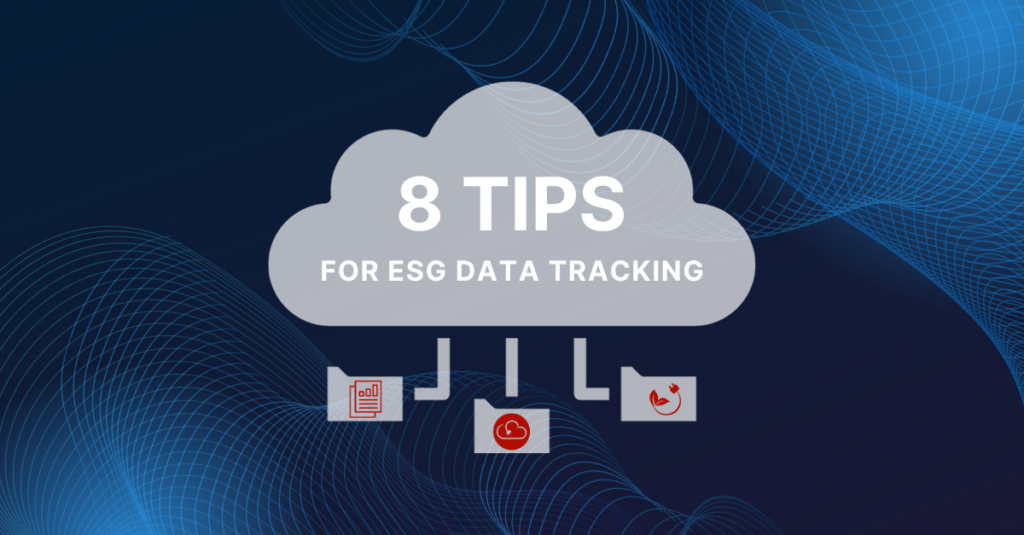1. Spend Time to Conduct a Comprehensive ESG Audit and Materiality Assessment.
Assess your organization’s current impact on the environment, society, and governance structure, as well as which of these ESG issues are material to or influence your financial bottom line. Identify and define which data points need to be emphasized and across which business units. For a more in-depth evaluation, engage a third-party audit firm specializing in ESG assessments. Utilize industry-standard ESG reporting frameworks, such as the Global Reporting Initiative (GRI) or Sustainability Accounting Standards Board (SASB) metrics, to systematically measure your current ESG performance.
2. Ensure ESG Goals Are Clear, Realistic, and Measurable Goals
Organizations should regularly measure and report on their progress toward the goals they’ve set. Ensure that your goals are specific, measurable, attainable, relevant, and time-bound. Goals stated towards emissions reductions, waste, water use improvements, and more should align with science-based methodologies and reasonable expectations based on base year emissions inventories. Firms that commit to unreasonable goals and do not regularly demonstrate or report on progress towards those goals will be at increased risk of litigation for greenwashing and false investor information.
3. Compare your KPIs to your operational, IT, and ESG data maturity and collaborate with other business units to solicit necessary support and insight
Once you’ve established your company’s material ESG themes, initiatives, and measurable KPIs, work with internal departments, collaborators, and stakeholders to design a system and processes to gather and manage the necessary data. This may require upfront research, fact-finding, internal education, and capacity-building. It’s common for ESG and sustainability teams to collect and gather environmental data from finance, operations, and/or facilities, social data from HR, and governance data from the board, finance, legal, risk, and other parts of the organization. ESG data collection is truly an aggregation process, one that requires significant cross-organizational collaboration, communication, and stakeholder engagement.
4. Measure and Monitor Progress Regularly
Consistent tracking and reporting over time are crucial. Identify metrics that reflect your ESG goals and use them to measure progress, and employ ESG-specific software for streamlined tracking and reporting. Regular updates (monthly or quarterly) through newsletters or dedicated ESG web pages can also enhance transparency. Auditing data upon pre and post-ingestion and real-time analytics and reporting are also good indicators of effective ESG data management and tracking.
5. Enhance Transparency and Reporting
Transparent reporting bolsters credibility! Develop an annual sustainability report following recognized frameworks like GRI, SASB, or TCFD detailing your ESG initiatives, progress, and future plans. These frameworks are being used as foundations for consolidated ESG disclosure initiatives around the world, suggesting that disclosing to each of these frameworks now is also a way to help ensure your firm is prepared for future ESG requirements.
6. Engage Stakeholders in Data Progress
Effectively understanding and communicating ESG performance to stakeholders is absolutely crucial. Ensure that the data and KPIs that you collect are then organized and translated in a way that is meaningful and useful for stakeholders, such as investors, customers, and employees. The effectiveness of those efforts will only be as reliable as the data that is collected and tracked! This is the most effective way to win internal executive buy-in for additional integration resources, as well as positive external consideration from investors, analysts, rating agencies, and other stakeholders.
7. Establish processes and controls for collecting and storing ESG data
To ensure your ESG data is accurate and auditable, it’s important to establish clear processes, controls, schedules, and accountability for collecting, reviewing, and storing it. This should involve designating specific individuals or teams to be responsible for collecting and organizing specific ESG data, setting up systems for centrally storing the data, establishing data quality checks and standards, and creating secure workflows and processes for audit and data review.
8. Standardize Your Data
For your stakeholders to analyze and utilize the information in your disclosures, bring your data into standardized formats. If your operations are globally distributed, this task can be cumbersome. Consult an ESG management software like WatchWire, that collects, audits, analyzes, and stores all your energy, water, waste, and emissions data in one place. With multiple integrations to LEED Arc, GRESB, ENERGY STAR Portfolio Manager, TCFD, and more, WatchWire is key to helping standardize your ESG data.
How WatchWire Can Assist Your Company With Sustainability Reporting
WatchWire is an integrated energy and sustainability management platform that streamlines, automates, and standardizes your sustainability reporting process. WatchWire collects, audits, analyzes, and stores all your energy, water, waste, and emissions data in one place, providing a single source of truth for your organization. With multiple integrations to LEED Arc, GRESB, ENERGY STAR Portfolio Manager, TCFD, and more, standardizing your sustainability reporting process is possible. WatchWire also provides real-time data monitoring, so you can see how well your sustainability measures are working and provide the most recent energy and emissions data to your investors.
To discover more about WatchWire and its capabilities, you can visit our website, blog, or resource library, request a demo, or follow us on LinkedIn, Instagram, or Twitter to keep up-to-date on the latest energy and sustainability insights, news, and resources.
 Top Sustainability Trends to Watch in 2025
Top Sustainability Trends to Watch in 2025

 Log In
Log In









